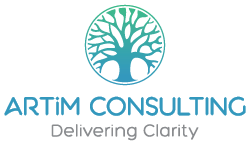Last week we explored the possibility of a relationship between strategic alignment and employee engagement and concluded that if there was a relationship, then we could benefit from this knowledge to improve engagement more effectively and reliably. This week we’ll look at what we did during our research to improve strategic alignment and what we observed as engagement outcomes.
It would be appropriate before we proceed to remind ourselves of the implications of organisations being complicated, complex adaptive systems involving human beings making subjective, personal interpretations and acting with intent. First, since we know outcomes in such environments are emergent, we should expect the unexpected. Second, since the environment is not fully controllable, it not possible to create two organisational situations that are identical in every respect, which in turn means that findings are indicative of the relationship, but cannot be considered as completely validated evidence of it.
The actions taken to improve strategic alignment represent a series of three interventions over a period of three years. Engagement surveys were conducted annually and the results widely disseminated within the organisation. We were looking for a relationship between the each of the interventions and changes in the results of surveys taken before and after the intervention.
The first intervention was based on the observation that the vision statement for the company had not been reviewed for a few years and employees were no longer familiar with it. The goal of the intervention therefore was the articulation of a company direction, which consisted of a mission statement, a long-term vision, a set of core values and a set of aspirational goals over a five-year period. A draft statement of company direction was put together by a small group of individuals, socialised across the organisation for input and then communicated using a variety of media to all employees. Engagement surveys conducted before and after the intervention showed an increase of close of five percent, a marginal though encouraging change.
The survey results in general indicated engagement level in one particular functional department was much lower than in the rest of the organisation, so we clearly needed to do something within that department. The company pays a performance-based bonus to its employees. Performance is assessed based on key result areas and performance indicators. At that time there wasn’t a process in the department to make sure that an employee’s goal agreements lined up with the company direction. So we put in place a top-down, vertical cascade process that aligned the goals of each team with those of their manager. The difference between the surveys before and after the intervention was larger than for the first intervention, into the double-digits.
The third intervention came at a time of change for the organisation, requiring us to implement a number of changes within the functional unit. We put together a more comprehensive process that delivered a strategic and operative plan, made changes to internal processes and organisation structure and put in place a skills development program. As individual actions, none of these were radically different from what we had done in the past, but this time they were planned and implemented as a single overall program of change. Surveys before and after the intervention once again showed an increase, but this time the change was significant, bringing the survey results on par with, even a little better than, the average for the organisation, a very positive and satisfying outcome indeed.
So, as expected, the observations did show a positive increase in engagement for all three strategic alignment interventions. But insights can we gather from the results? Next week let’s take a look a possible explanation for the outcomes and how that might help us in our journey towards higher employee engagement.
If you are interested in learning more about organisational alignment, how misalignment can arise and what you can do about it join the community. Along the way, I’ll share some tools and frameworks that might help you improve alignment in your organisation.

